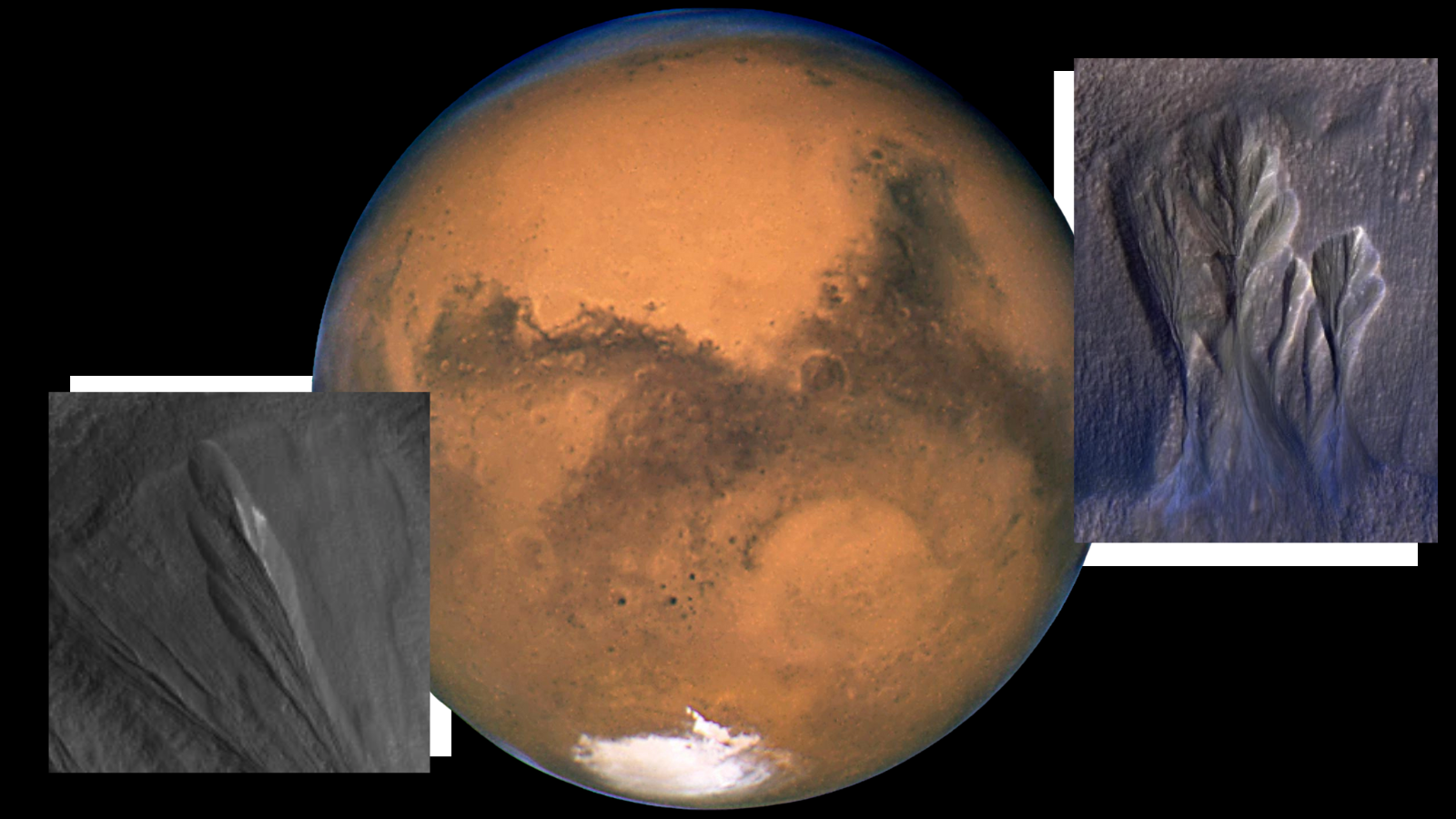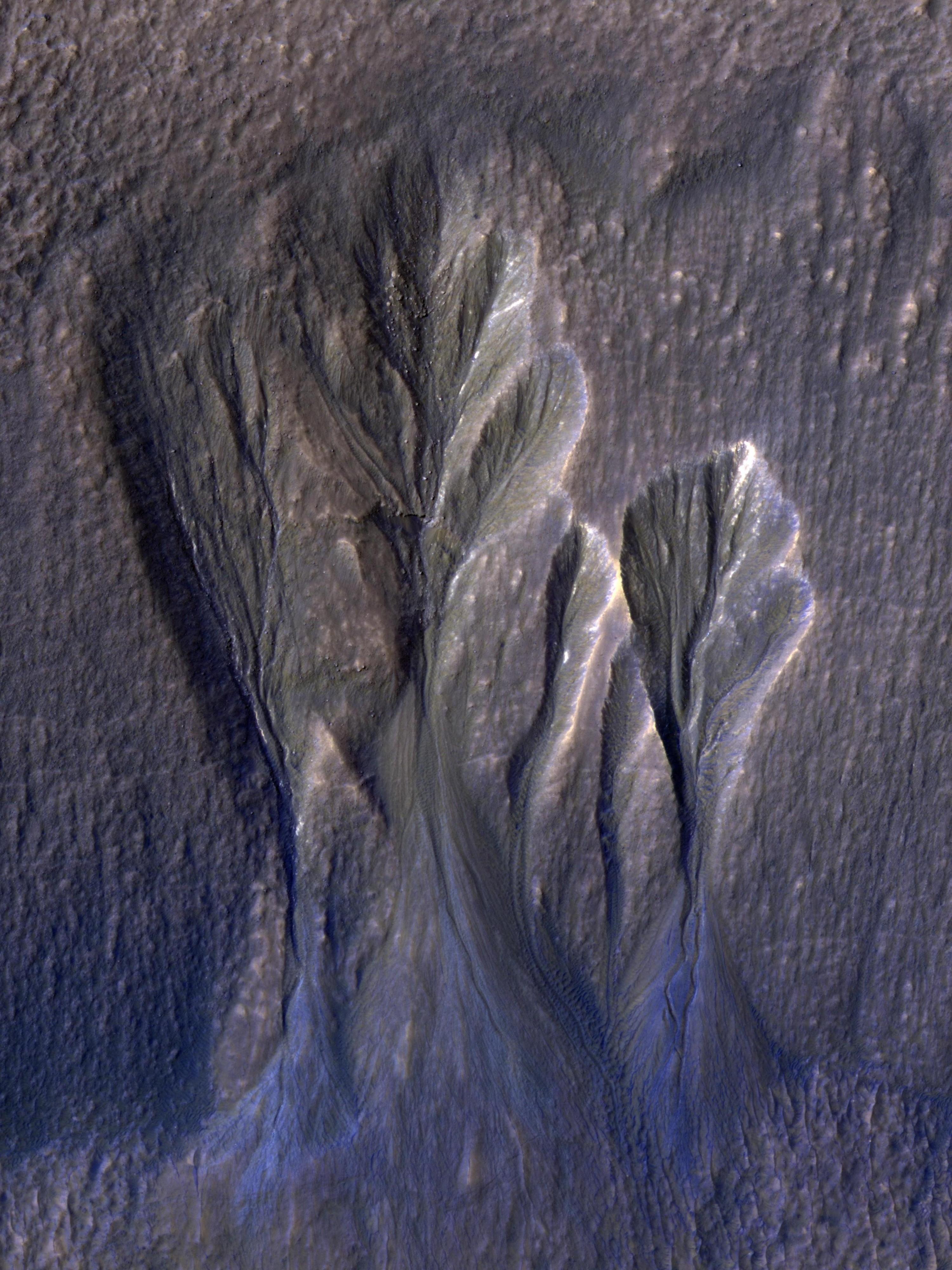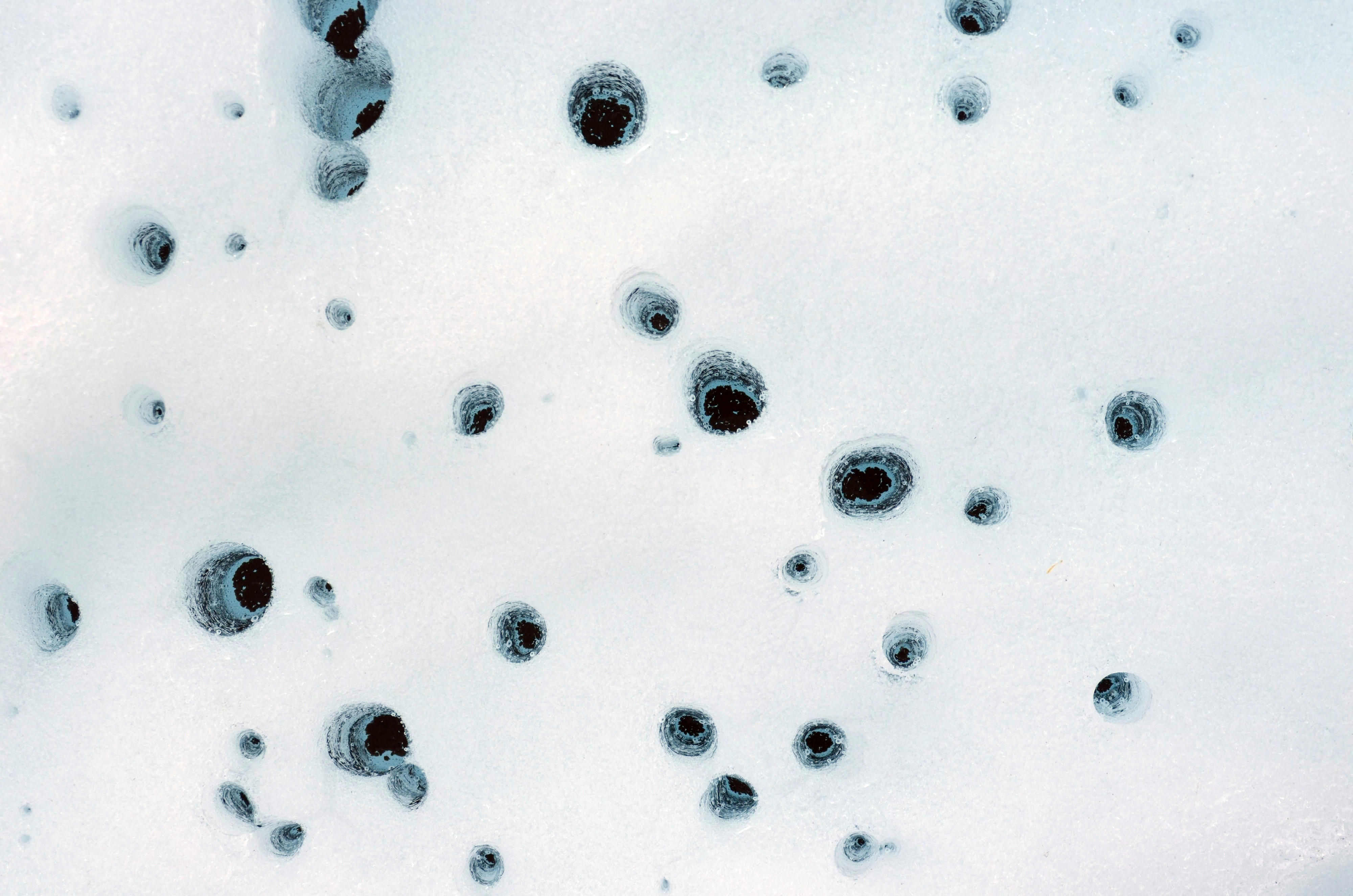
The conditions needed for photosynthesis to occur on Mars could exist beneath the surface of dusty ice at the Red Planet’s mid-latitudes, new research suggests.
Photosynthesis is the process by which living things like plants, algae and cyanobacteria create chemical energy. It requires water and light to proceed and creates the majority of the oxygen in Earth's atmosphere. The new study suggests that a thick enough layer of ice on Mars could filter out harsh radiation from the sun but also allow enough sunlight through for photosynthesis, creating so-called "radiative habitable zones."
Just as photosynthesis needs just the right light to proceed, these results must be viewed in the right light. While they don't suggest that life currently exists on Mars or has ever existed in the history of the Red Planet, the results do give scientists engaging in this ongoing search an idea of where to look.
"We are not stating we have found life on Mars, but instead we believe that dusty Martian ice exposures in the mid-latitudes represent the most easily accessible places to search for Martian life today," research leader Aditya Khuller Postdoctoral Research Fellow at NASA's Jet Propulsion Laboratory told Space.com.
Related: Life on Mars: Exploration and evidence
Earth vs. Mars: Spot the difference
Both Earth and Mars exist within the so-called "habitable zone" of the sun, the region around a star in which temperatures are right to allow liquid water to exist on a planet's surface. Yet, while 71% of Earth's surface is covered in liquid-water oceans, Mars appears to be a mostly dry landscape.
Observations from Mars missions such as the Curiosity and Perseverance rovers have shown that this wasn't always the case. Geological features explored by these robots, such as dry lake beds and river tributaries, indicate that liquid water ran across the vistas of the Red Planet billions of years ago. Additionally, missions flying over Mars, such as NASA's Mars Reconnaissance Orbiter (MRO), have found water ice on Mars, often in unexpected regions.
Scientists think Mars lost its liquid water billions of years ago when its magnetic field sputtered out (Earth's magnetosphere is still going strong) and its atmosphere was mostly stripped away. This meant there was little to prevent evaporating water from being lost to space. The lack of a thick atmosphere also means that modern Mars is bombarded by harsh ultraviolet radiation from the sun, which is deadly to living things and destroys the complex molecules needed for life.

"Unlike Earth, Mars lacks a protective ozone shield, so there is 30% more harmful ultraviolet radiation at the surface in comparison with our planet," Khuller said. "Thus, on Mars, the areas where photosynthesis could occur are more likely to be within dusty ice because the overlying dusty ice blocks the harmful ultraviolet radiation at Mars’ surface, and liquid water is highly unstable at the surface of Mars due to its dry atmosphere."
Using computer simulations, the team found that dusty Mars ice can melt from within, with overlying ice protecting this shallow subsurface liquid water from evaporating into the dry Martian atmosphere.
"So, the two key ingredients for photosynthesis can be present within dusty Martian ice in the mid-latitudes," Khuller added. "Photosynthesis requires adequate amounts of sunlight and also liquid water to occur. Two previous independent simulations of dense Martian snow found that melting below the surface can occur in the Martian mid-latitudes today if small amounts of dust (less than 1%) are present within the snow.
"By discovering dusty ice exposed within buried dusty snowpacks associated with Martian gullies a few years ago, there is a mechanism for them to melt below the surface to form shallow subsurface liquid water."

Khuller explained that the team found that, for the exposed dusty ice, overlying ice can block the harmful ultraviolet radiation at Mars’ surface. This ice also allows enough solar radiation to penetrate below the ice surface to allow photosynthesis to occur.
The depths at which these radiative habitable zones exist depend on the amount of dust within the ice. The team's simulations showed that very dusty ice would block too much sunlight. However, ice with 0.01% to 0.1% dust would allow a radiative zone to exist at a depth of between 2 inches and 15 inches (5 to 38 centimeters). Less "polluted" ice would allow for the existence of a deeper and wider radiative zone at a depth of between 7 feet and 10 feet (2.2 to 3.1 meters).
The team thinks that the polar regions of Mars, where the majority of its ice is found, would be too cold for these radiative habitable zones to exist because of a lack of subsurface melting. Such melting would be more likely to occur at mid-latitude areas of the Red Planet.
Related: Mars: Everything you need to know about the Red Planet

The team's theory has some support, in the form of observational evidence coming not from Mars but from our planet.
"I was surprised to find out that there are potentially similar analogs for life within ice on Earth that contains dust and sediment," Khuller added. "These are called 'cryoconite holes' and form when dust and sediment on top of the ice melt into the ice because it is darker than the ice."
Once within the ice every summer, the researcher continued, liquid water forms around the dark dust inside the ice due to heating from sunlight, even if the ice above is frozen, like a lid. This happens because the ice is translucent, allowing sunlight to penetrate below the surface.
"People have found microorganisms that live in these shallow subsurface habitats on Earth," Khuller said. "The microorganisms typically go dormant in the winter when there is not enough sunlight to form liquid water within the dusty ice."
Of course, none of this means that photosynthetic life exists on Mars or ever did. But it is intriguing and could spur further investigation of the possible existence of subsurface radiative habitable zones on the Red Planet.
"I am working with a team of scientists to develop improved simulations of if, where, and when dusty ice could be melting on Mars today," Khuller concluded. "Additionally, we are recreating some of these dusty ice scenarios in a lab setting to examine them in more detail."
The team's research was published online today (Oct. 17) in the journal Nature Communications Earth & Environment.







